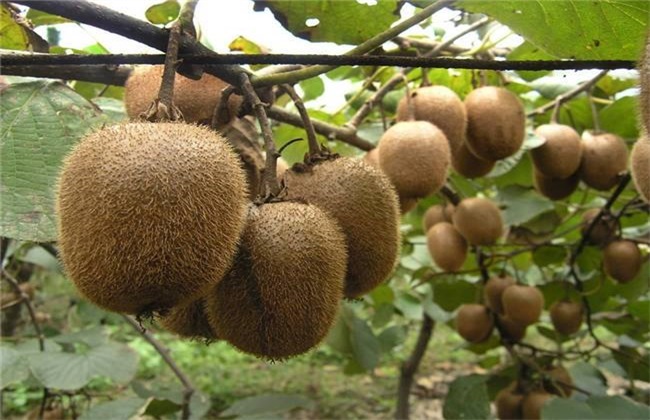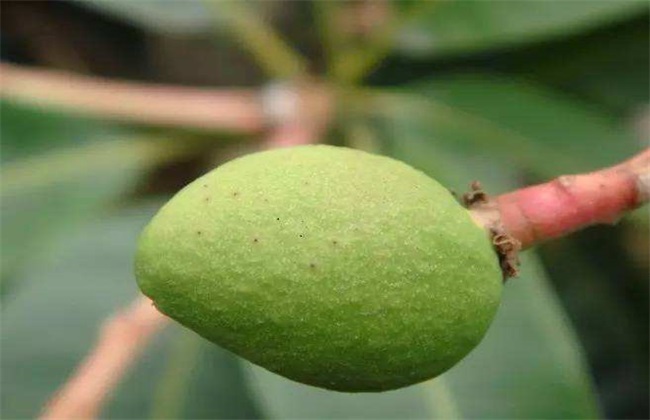Common misunderstandings of kiwifruit pruning in summer
When planting kiwifruit, pruning is essential, especially after entering summer, a reasonable summer pruning work can effectively improve the yield and quality of kiwifruit. However, many growers do not have a correct pruning method, which affects the growth of kiwifruit more or less, and there are many misunderstandings. So today, the editor will introduce to you the common misunderstandings of kiwifruit summer pruning. Let's take a look!

1. Overtrimmed
The pruning work will mainly have a greater impact on male trees. When pruning a male tree, many fruit growers will cut off the crown 4ap5 after the male tree has blossomed. And will not only shrink the crown, but also cut the fruit trees, resulting in a sharp decline in the growth of male trees, and even die in serious cases. Even if it survives, the quality of the pollen provided by the tree is very low. Therefore, when we prune the male tree, we can only trim the general branches, and mainly shrink the branches, cut off some of the weak branches in the bore, improve the permeability and prevent them from intertwining each other.
2. Cut off all vegetative branches
When planting, many growers feel that if the nutrient branches do not bear fruit, they will only consume more nutrition and must be cut off in time. Especially when there are phenomena such as size, fallen leaves and malnutrition. In fact, the vegetative branches of kiwifruit trees should maintain a certain proportion in the fruit trees, if a large number of pruning, then the growth of kiwifruit trees will be greatly affected. Because most of the vegetative branches are important branches for photosynthesis of kiwifruit trees. We can properly remove some overdense branches, but we should also retain a certain number of coring work to control its growth rate.
3. Too few mother branches
The main vines and inner branches of kiwifruit trees are the main cultivation objects of fruiting branches in the second year. During summer pruning, the outer branches of the fruit should control its growth, so the inner branches should carry out photosynthesis around to ensure the ratio of leaves to fruits. If only the mother branch of the second year is retained during pruning, it will certainly not be able to meet the requirements of the number of leaves of fruit trees, which will have a great impact on photosynthesis and photosynthetic matter accumulation. Therefore, when we retain the fruiting mother branch, we should leave about 35% more fruiting mother branch, so as to meet the leaf area requirements of crown synthetic nutrition.
4. inappropriate time to pick out the heart.
In order to restrain the growth of the main vine and some inner-bore branches, we should use the heart-picking method to change the growth when pruning. Reasonable coring can effectively improve the germination rate, survival rate and fruit setting rate of the fruiting mother branch in the second year. However, if the heart is picked too late, the germination of the secondary branch will be blocked, which will have a great impact on the cultivation of the reserve branch. Therefore, we should carry out the heart-picking work before flowering, and must not be carried out after flowering, otherwise the reservation of the mother branch will be affected and the fruit rate of the second year will be reduced. Then it should be carried out reasonably according to the growth of the branches. The coring work can only be used for some overgrown branches, but not for other branches.
The above is a brief introduction to the common misunderstandings of kiwifruit summer pruning. In addition, we also need to pay attention not to use the method of cutting leaves to prevent wind damage, but to bind branches and adjust the tree structure to prevent wind damage. Otherwise, it will affect the nutritional supply of fruit, but affect the yield, so we must pay more attention to it. That's all for today's introduction. This article is for reference only. Thank you for your reading and support.
Related
- Moge, come on! The staff of the peasant association in the producing area of cantaloupe were frightened when the crowd gathered.
- Causes and Solutions of low Fruit setting rate of Apple
- Symptoms and control measures of passion fruit virus disease
- Fruit growing lesson: how do apple orchards keep high yields?
- Can you build orchards in the mountains? What are the pros and cons?
- How to manage the coloring period of Crisson grape?
- This paper introduces the processing technology of two kinds of fig products.
- How much is a month for retired teachers in rural areas by 2020?
- How can strawberry planting increase sugar content? We should pay attention to management in many aspects.
- What are the cultivation techniques on how to improve the yield of golden fruit?



